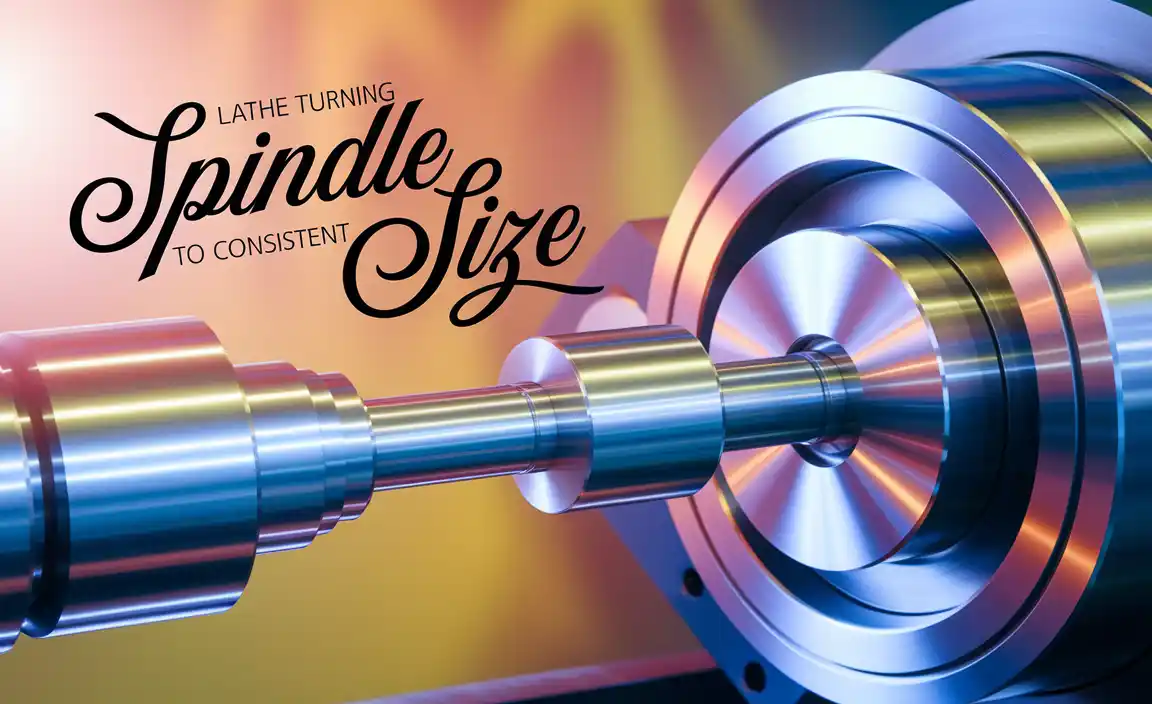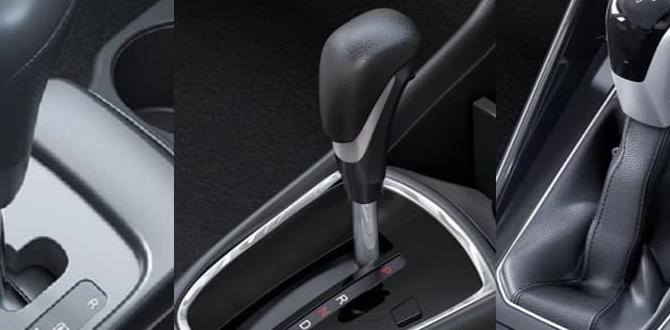Quick Summary: For Aluminum 7075, single flute end mills generally offer faster cutting speeds and better chip evacuation, making them ideal for high-speed machining. Two flute end mills provide more rigidity and are better suited for heavier cuts, slotting, and general-purpose milling where chip clearance isn’t the primary concern.
Ever stare at a box of shiny new end mills and wonder which one is best for that tricky Aluminum 7075 project? You’re not alone! Choosing the right tool can make the difference between a smooth, clean cut and a frustrating mess. Aluminum 7075 is a fantastic material, strong and lightweight, but it can be a bit sticky if you’re not careful. Don’t sweat it – picking the right end mill is simpler than it sounds. We’ll break down the differences between single and two-flute options so you can make the best choice for your needs, every time. Let’s get those chips flying!
Understanding Aluminum 7075
Aluminum 7075 is a premium aluminum alloy known for its exceptional strength-to-weight ratio, comparable to some steels. This makes it a favorite for aerospace components, high-performance sporting goods, and demanding structural parts. However, its hardness and tendency to “gum up” or stick to cutting tools require careful consideration when machining. The right cutting tool, coupled with proper speeds and feeds, is crucial for achieving optimal results.
What Are Flutes?
Before we dive into single vs. double, let’s clarify what “flutes” are. Flutes are the helical grooves or channels machined into the cutting end of an end mill. Their primary jobs are:
Material Removal: The cutting edges along the flutes shear away the material.
Chip Evacuation: The spiral shape helps to carry the chips of removed material away from the cutting area. This is super important to prevent chip recutting, overheating, and tool breakage.
The number of flutes on an end mill significantly influences its performance characteristics.
Single Flute End Mills: The Speed Demons
Single flute end mills have just one cutting edge and one flute. This design might seem simple, but it offers some compelling advantages, especially for aluminum.
Pros of Single Flute End Mills for Aluminum 7075:
Superior Chip Evacuation: With only one flute, there’s more open space for chips to escape. This is a huge deal with aluminum, which can be gummy and clog flutes easily. Better chip evacuation means less heat buildup and a cleaner cut.
Faster Cutting Speeds: Because they clear chips so well, you can often run single flute end mills at higher spindle speeds (RPMs) and feed rates. This translates to faster machining times, which is great for productivity.
Reduced Heat: Better chip removal directly leads to less heat being generated at the cutting zone. Overheating is a common enemy when machining aluminum, as it can soften the material and cause it to stick to the tool.
Ideal for Non-Ferrous Materials: Single flute end mills are often the go-to choice for softer metals like aluminum, brass, and plastics.
Cons of Single Flute End Mills for Aluminum 7075:
Less Rigidity: With fewer cutting edges engaging the material at any given time, a single flute end mill is less rigid than a multi-flute tool. This means they are more prone to deflection under heavy loads.
Not for Heavy Cuts: Because of their lower rigidity, they aren’t ideal for deep plunging or extremely aggressive side milling where significant material is being removed in a single pass.
Can Leave a Rougher Surface Finish (in some cases): While they excel at chip clearing, in certain operations, the reduced engagement can sometimes lead to a slightly less refined surface finish compared to a well-applied multi-flute mill.
2 Flute End Mills: The All-Rounders
Two flute end mills offer a balance of cutting performance and tool strength. They have two cutting edges and two helical flutes.
Pros of 2 Flute End Mills for Aluminum 7075:
Good Chip Clearing: While not as efficient as a single flute, two flutes still provide decent chip clearance, especially in shallower cuts or when using coolant.
Increased Rigidity: Having two flutes means more cutting edges are engaged simultaneously. This makes them more robust and capable of handling heavier cuts and more demanding operations like slotting or pocketing.
Better for Plunging: The increased rigidity makes them a better choice for plunging straight down into the material compared to single flute tools, although specialized plunge or “data” end mills are even better for this.
Versatility: They are often considered more versatile than single flute mills and can handle a wider range of materials and operations, even if not always being the absolute best for aluminum.
Cons of 2 Flute End Mills for Aluminum 7075:
Slower Cutting: Generally, you’ll run two flute end mills at lower RPMs and feed rates than single flute tools, especially in aluminum, to manage chip load and heat.
Tendency to Clog: Aluminum can more easily pack up the flutes of a two flute end mill, leading to chip recutting, excessive heat, and potential tool failure if not managed properly.
More Heat Generation: With less open space for chips, heat can build up more quickly, especially in deeper cuts.
Comparing Single Flute vs. 2 Flute for Aluminum 7075
Let’s put them side-by-side to see how they stack up for Aluminum 7075.
When machining Aluminum 7075, understanding the trade-offs between single and two-flute end mills is key to success. Here’s a breakdown:
| Feature | Single Flute End Mill | 2 Flute End Mill |
|---|---|---|
| Chip Evacuation | Excellent. More space for chips to escape, reducing clogging and heat. | Good. Sufficient for many applications, but can clog more easily with gummy materials like aluminum. |
| Cutting Speed (RPM/Feed) | Generally higher speeds possible due to excellent chip clearing. | Generally lower speeds and feeds compared to single flute to manage chip load and heat. |
| Rigidity & Strength | Lower rigidity, more prone to deflection under heavy load. | Higher rigidity, better for heavier cuts and more stable engagement. |
| Best For | High-speed machining, light roughing, finishing passes, profiling, and operations where chip evacuation is critical in aluminum. | Slotting, pocketing, general-purpose milling, roughing, and situations where more tool rigidity is needed. |
| Heat Buildup | Less heat generated due to efficient chip removal. | More potential for heat buildup, especially in deeper cuts or with inefficient chip clearing. |
| Material Removal Rate (MRR) | Often higher in aluminum due to higher speeds possible. | Can be lower in aluminum due to lower speed/feed constraints. |
| Potential for Tool Wear/Failure | Lower risk of premature failure from chip welding if speeds/feeds are optimized. | Higher risk of premature failure from chip welding or breakage if not properly managed for aluminum. |
Key Considerations for Machining Aluminum 7075
Beyond just the number of flutes, several other factors are crucial when tackling Aluminum 7075.
1. Tool Coatings
Coatings can dramatically improve performance. For aluminum, coatings like TiAlN (Titanium Aluminum Nitride) and ZrN (Zirconium Nitride) can help:
Reduce friction: This is key to preventing aluminum from sticking to the cutter.
Increase hardness: Making the tool more resistant to wear.
Improve heat resistance: Allowing for higher cutting speeds.
However, for pure aluminum machining, sometimes an uncoated or a specialized “Bright Finish” end mill with excellent edge geometry is preferred, as some coatings can create a surface for aluminum to adhere to. Always check the manufacturer’s recommendations.
2. Geometry
Helix Angle: A higher helix angle (like 45-60 degrees) is generally better for aluminum. It provides a shearing action that reduces cutting forces and helps carry chips up and out of the cut.
Rake Angle: Positive rake angles promote a shearing action, which is beneficial for softer materials like aluminum. Many end mills designed for aluminum will feature optimized rake angles.
Corner Radius/Chamfer: A small corner radius or chamfer can add strength to the cutting edge, reducing the likelihood of chipping, common when working with harder aluminum alloys.
3. Speeds and Feeds
This is where things get specific, and it’s vital to do your research or start conservatively. Aluminum 7075 is a harder alloy.
Surface Speed (SFM): The speed at which the cutting edge moves through the material. For Aluminum 7075, this can range from 300-800 SFM or even higher depending on the tool, coating, and machine rigidity.
Chip Load: The thickness of the chip removed by each cutting edge per revolution. For aluminum, you want a chip load that is thick enough to cut cleanly but not so thick that it overwhelms the flute or the tool’s strength. This often means taking a slightly heavier chip load at a faster feed rate rather than a very light chip load at a slow feed rate, especially with single-flute tools.
A great resource for finding starting points for speeds and feeds is the Sandvik Coromant cutting data calculator. These tools are invaluable for any machinist.
4. Coolant/Lubrication
Machining aluminum efficiently almost always benefits from some form of coolant or lubricant.
Flood Coolant: A continuous stream of coolant flushes chips away, cools the cutting tool, and lubricates the cut.
Mist Coolant: A spray of coolant and air, providing cooling and lubrication with less fluid.
Lubricants/Cutting Oils: For manual machining or lighter applications, a dedicated aluminum cutting fluid can be applied to reduce friction and aid chip evacuation.
When to Choose Which: Practical Scenarios
Let’s look at some common machining tasks and which end mill type is typically better:
Scenario 1: High-Speed Profiling an Aluminum 7075 Bracket
You need to cut out a complex shape from a sheet of Aluminum 7075 quickly and cleanly.
Best Choice: Single Flute End Mill.
Why: You want to maximize your spindle speed (RPM) and feed rate. The excellent chip evacuation of a single flute will prevent the gummy aluminum from building up on the tool, ensuring a good surface finish and preventing tool breakage. You’ll be taking shallower depth-of-cut (DOC) passes in this scenario, which plays well to the strengths of a single flute.
Scenario 2: Slotting an Aluminum 7075 Block
You need to mill a deep, narrow slot into a block of Aluminum 7075.
Best Choice: 2 Flute End Mill.
Why: Milling a slot involves significant side loading. The increased rigidity of a two-flute end mill will provide better stability and resistance to deflection than a single flute. While chip evacuation in a slot can be challenging, the two flutes offer more cutting edges to handle the load, and you can often use a tighter pitch (or “data/plunge” type specialized end mill has even more consideration here) to manage chip evacuation. You’ll likely use a lower DOC and feed rate here.
Scenario 3: General Pocketing in Aluminum 7075
You need to mill out a large pocket in a piece of Aluminum 7075, with moderate depth and width.
Best Choice: 2 Flute End Mill (likely a specialized aluminum rougher/finisher).
Why: A two-flute end mill provides the best balance of rigidity and chip clearance for general pocketing. You can often use specialized “high-performance” 2-flute aluminum roughers designed with aggressive geometries and chip breakers to achieve a good material removal rate while managing heat and chip load.
Scenario 4: Finishing Pass on an Aluminum 7075 Surface
After roughing, you need a smooth, precisely finished surface.
Best Choice: Single Flute End Mill (often a specific geometry for finishing).
Why: For a finishing pass, you’re typically taking a very light DOC. The high surface speeds achievable with a single flute, combined with its excellent chip evacuation, can produce a superior mirror-like finish on aluminum, minimizing any chance of the soft aluminum smearing or re-welding.
Specialized End Mills for Aluminum
It’s worth noting that the milling world is full of specialized tools. For Aluminum 7075, you might also encounter:
High-Performance Aluminum End Mills: These often feature aggressive helix angles (up to 60 degrees), polished flutes, specialized coatings (or are uncoated/bright finish), and optimized geometries specifically for machining aluminum alloys. They can come in both single and multiple flute counts, but are designed to overcome the sticky nature of aluminum. For example, Harvey Tool offers a range of aluminum-specific end mills designed for high performance and excellent chip evacuation.
Form/Ball/Corner Radius End Mills: These have specific tip shapes (ball nose for curves, corner radii for fillets, flat ends for square profiles) and are available in single or multiple flutes depending on the operation. The considerations for single vs. two-flute still apply.
Safety First!
No matter what end mill you choose, always remember safety:
Secure your workpiece: Ensure your part is firmly clamped. Aluminum 7075 can exert significant forces when being machined.
Wear safety glasses: Bits of aluminum can fly off unexpectedly.
Use appropriate feeds and speeds: Start conservatively and increase gradually. Listen to your machine and your tool – odd noises are a warning sign.
Proper chip management: If not using coolant, be prepared to clear chips safely. They can be sharp and hot.
Use appropriate PPE: Gloves can protect against sharp edges and hot chips, but be cautious around rotating machinery.
Frequently Asked Questions (FAQ)
Q1: Can I use the same end mill for Aluminum 7075 and steel?
A1: Generally, no. While some universal end mills exist, they don’t perform optimally in both. Aluminum is much softer and gummier than steel. End mills designed for aluminum usually have polished flutes and specific geometries to prevent material buildup, while those for steel prioritize hardness and heat resistance for tougher materials. Using the wrong tool can lead to poor finish, tool breakage, or damage to your workpiece.
Q2: What’s the biggest mistake beginners make when machining aluminum 7075?
A2: The most common mistake is trying to use the same parameters (speeds and feeds) as for steel or brass, or using an end mill not suited for aluminum. This often leads to the aluminum “guming up” or welding onto the cutting edges, causing excessive heat, poor finish, and tool failure. Not using enough coolant/lubrication is also a frequent pitfall.
Q3: When should I definitely avoid a single flute end mill for Aluminum 7075?
A3: You should avoid single flute end mills for heavy-duty slotting, deep pocketing where rigidity is paramount, or any operation where you need to take very aggressive, deep cuts. Their lower rigidity makes them prone to deflection and chatter in these situations.
Q4: What does “uncoated” or “bright finish” mean for an end mill?
A4: “Uncoated” or “bright finish” refers to an end mill that has no coating applied. The flutes are polished to a bright, smooth surface. This is often ideal for machining aluminum because the polished surface has very low friction and prevents the gummy aluminum from sticking and building up on the cutting edge. Manufacturers of quality aluminum end mills often spend extra time polishing these tools.
Q5: How critical is coolant when machining Aluminum 7075?
A5: Coolant is highly critical for efficient and successful machining of Aluminum 7075, especially with higher speeds and feeds. It drastically helps in flushing away chips, reducing friction, and preventing the aluminum from welding to the tool. While you can machine aluminum dry, it’s usually slower, noisier, produces a worse finish, and significantly increases the risk of tool damage.
Q6: What size of chip load should I aim for with Aluminum 7075?
A6: Chip load is measured in thousandths of an inch (or mm) per tooth per revolution. For Aluminum 7075, a good starting point for a general-purpose 1/4 inch diameter end mill might be around 0.002 – 0.005 inches per tooth. However, this varies greatly with end mill diameter, flute count,





